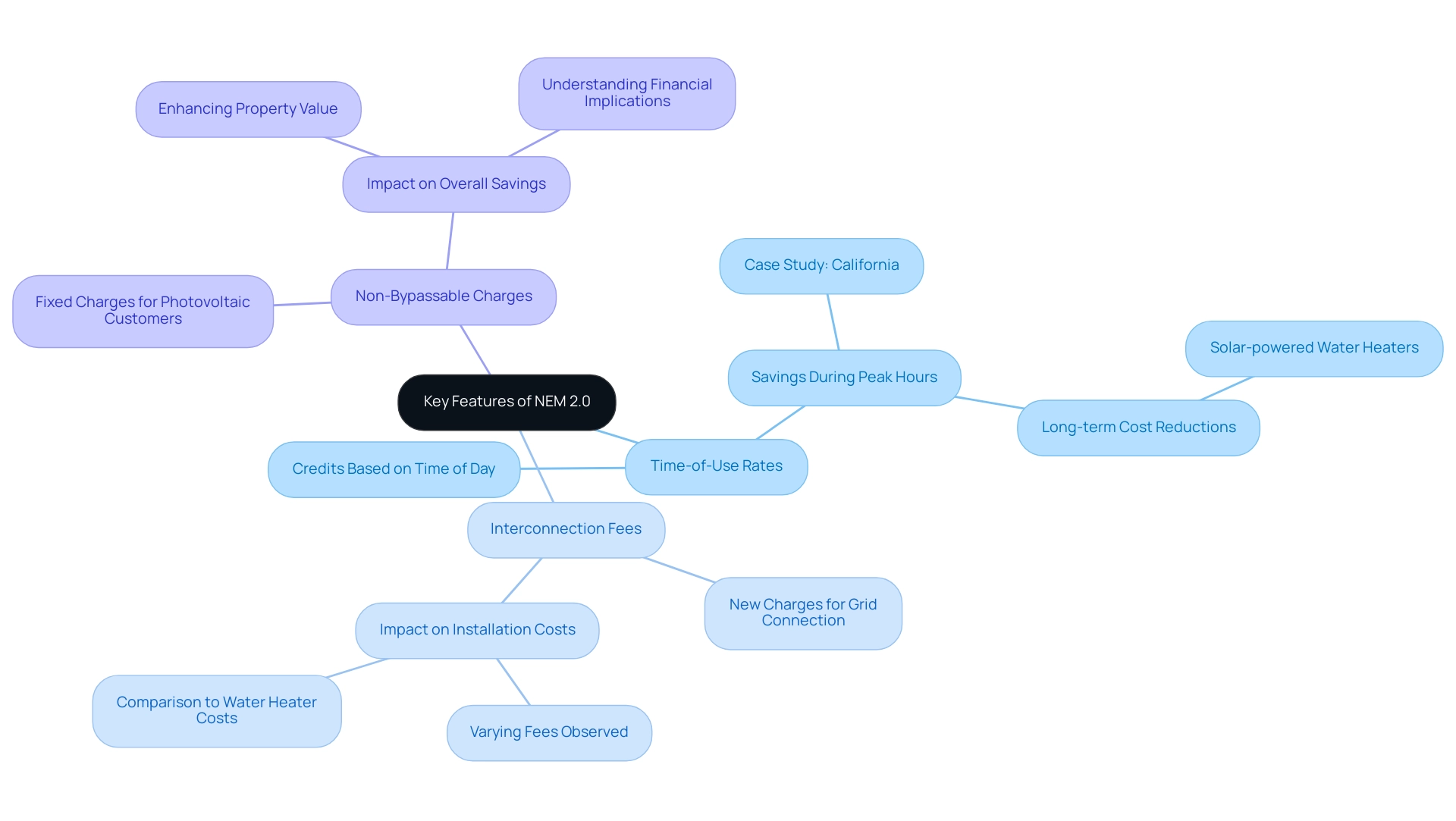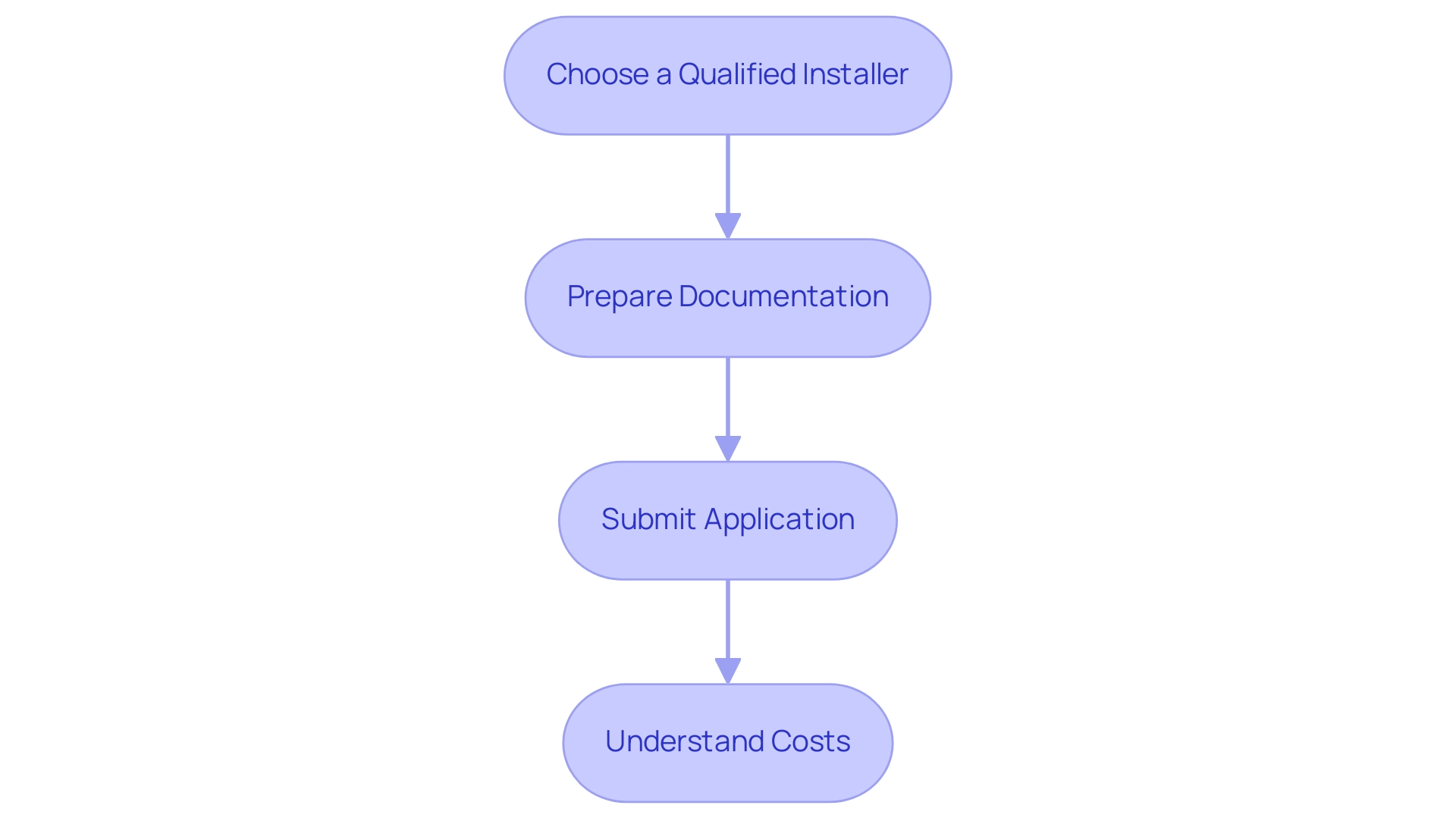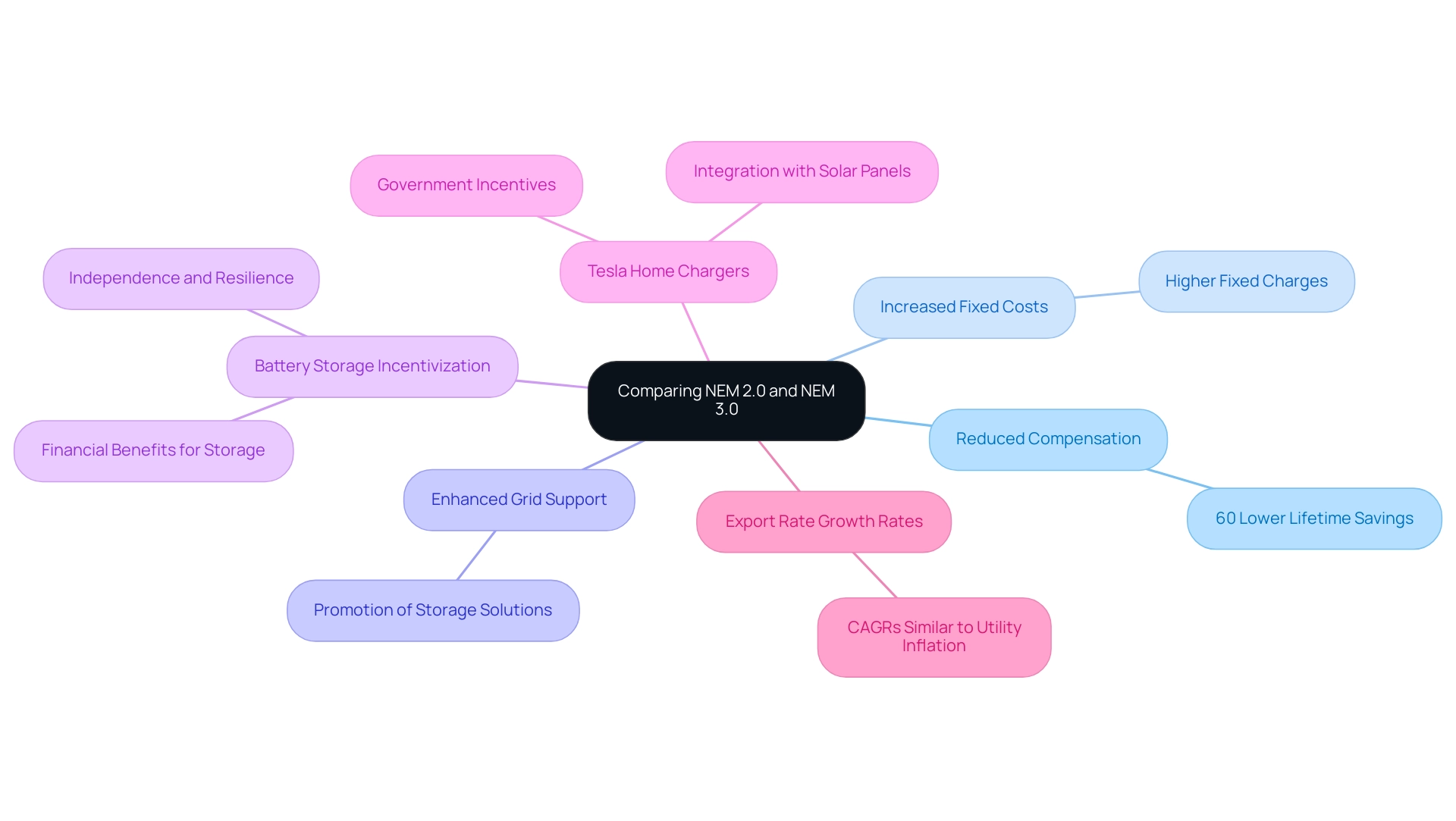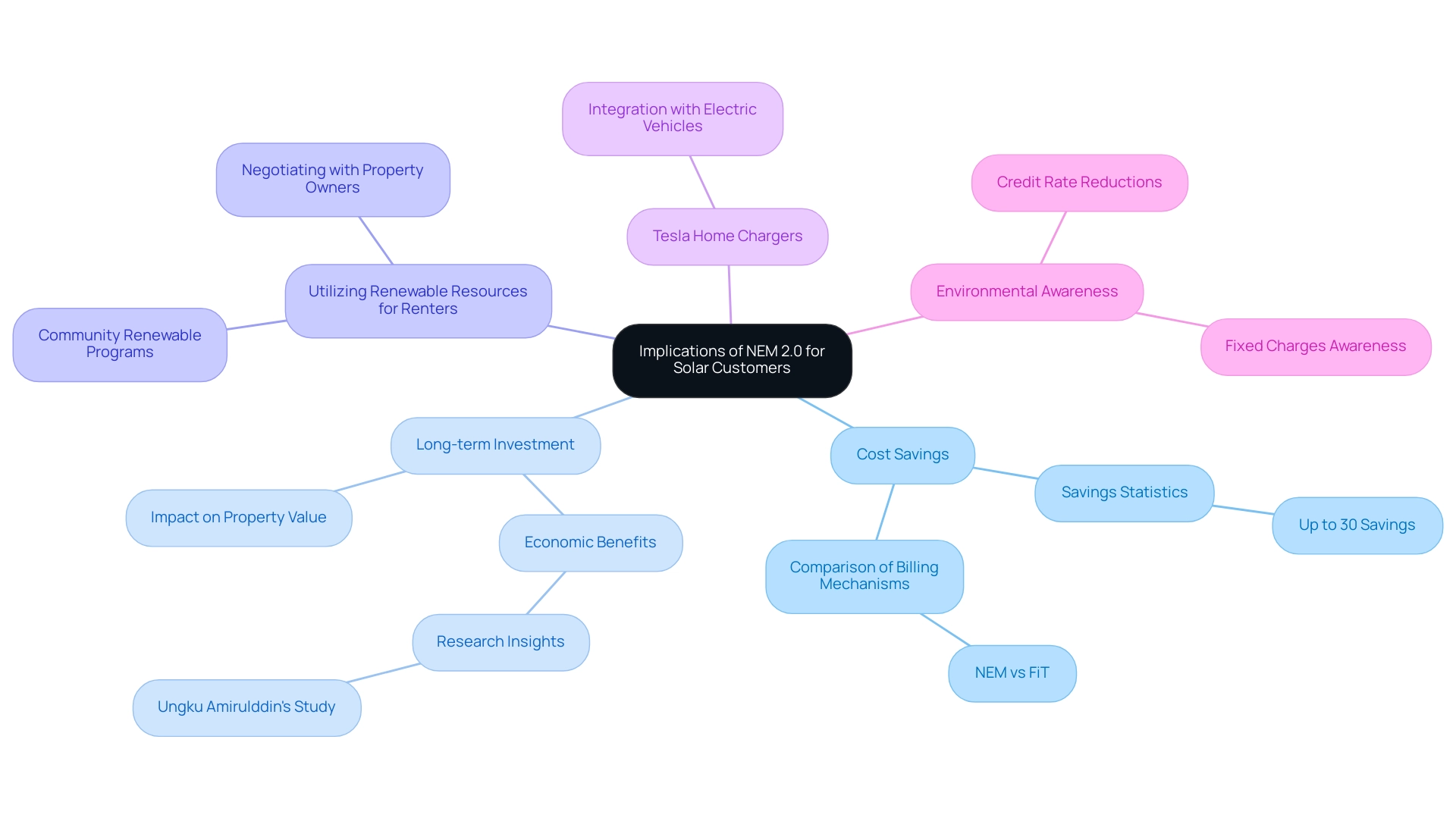Introduction
As solar energy continues to gain traction across the United States, California’s Net Energy Metering 2.0 (NEM 2.0) policy stands out as a beacon of opportunity for homeowners looking to reduce their electricity bills and embrace renewable energy. This innovative framework allows solar customers to earn credits for the excess energy their systems feed back into the grid, making solar power not just an environmentally friendly choice, but also a financially savvy one.
With the support of local experts and a growing community of eco-conscious homeowners, navigating the intricacies of NEM 2.0 can lead to significant savings and a sustainable future. Understanding the key features, application process, and potential changes on the horizon, such as NEM 3.0, is essential for anyone considering a solar investment.
Whether it’s maximizing energy efficiency or enhancing property value, this comprehensive overview will equip homeowners with the knowledge they need to make informed decisions about their solar journey.
Understanding Net Energy Metering 2.0: A Comprehensive Overview
What is nem2? Net Energy Metering 2.0 (NEM 2.0) is an essential policy in California that enables customers with photovoltaic systems to earn credits for the excess power their systems return to the grid. This innovative approach not only assists homeowners in reducing their electricity expenses by applying these credits to their utility bills but also promotes the extensive installation of photovoltaic panels. Powercore Electric, with its local expertise, understands the unique needs of Northern California communities.
As one pleased client mentioned, ‘Powercore assisted us in discovering the ideal renewable solution for our shaded property, ensuring we enhance our efficiency.’ What is nem2? It plays an essential role in supporting renewable power sources, as demonstrated by photovoltaic plants leading renewables power purchase agreements (PPAs) with a share of nearly 70% in 2022. The sector also experienced a remarkable annual capacity increase of 220 GW last year, a trend expected to continue.
As eco-conscious homeowners, knowing what is nem2 not only benefits your wallet but also contributes to a sustainable future for all. With worldwide investments in photovoltaic systems exceeding USD 320 billion last year, the momentum for renewable power is more robust than ever. So, if you’re contemplating renewable sources, be aware that you’re becoming part of an expanding community committed to cleaner power solutions and a healthier planet.
Furthermore, with the introduction of NEM 3.0, homeowners can look forward to even more opportunities for maximizing their energy investments and contributing to California’s renewable energy goals.
Key Features and Changes of NEM 2.0
With the introduction of NEM 2.0, understanding what is nem2 is essential for eco-conscious homeowners to be aware of several pivotal changes that have been rolled out:
-
Time-of-Use Rates: Under the new framework, renewable energy customers receive credits based on the time of day they send electricity back to the grid. This structure encourages homeowners to maximize their energy generation during peak hours, when demand and prices are highest, ultimately leading to better financial returns.
For example, a case study from California revealed that homeowners who modified their power consumption to coincide with these peak hours experienced a notable rise in their savings on electricity bills, akin to the long-term cost reductions linked to solar-powered water heaters, which can heat water to temperatures as high as 400 degrees Fahrenheit.
-
Interconnection Fees: Connecting your energy system to the grid now comes with new interconnection fees. These charges can influence the upfront costs of installation, so it’s crucial to factor them into your budget when considering renewable energy.
An example of this could be observed in recent installations where homeowners encountered varying interconnection fees, affecting their overall investment in photovoltaic systems, much like the initial costs of water heaters that can provide substantial long-term benefits. According to a recent survey, homeowners who installed water heaters powered by the sun reported an average of 30% reduction in their water heating costs compared to traditional systems.
-
Non-Bypassable Charges: Even if you generate your own energy, NEM 2.0 mandates that photovoltaic customers pay certain fixed charges.
This can reduce the overall savings you might expect from utilizing renewable energy, making it vital to understand how these fees will affect your finances. However, the integration of renewable energy solutions, including water heaters that utilize sunlight, can significantly contribute to understanding what is nem2 by reducing utility expenses and supporting a shift toward more sustainable living practices. Testimonials from users indicate that these systems not only cut costs but also enhance property value, appealing to eco-conscious buyers.
Understanding what is nem2 is essential as it directly impacts the financial implications of transitioning to renewable energy. As Piotr Bojek, a leading expert in the field, noted,
In 2022, photovoltaic technology further strengthened its leading position as the power generation technology with the most investment.
With global investments in photovoltaic technology exceeding USD 320 billion last year and a projected growth of generation to approximately 8,300 TWh by 2030, it is crucial to understand what is nem2 for making informed decisions as you explore your options and consider the long-term value of water heaters.
Navigating the Application Process and Costs of NEM 2.0
Understanding what is nem2 can help you with a simple process of applying that enables you to utilize sunlight effectively, particularly with the assistance of local incentives available in Bakersfield. Here’s how to get started:
-
Choose a Qualified Installer: Begin by selecting a reputable installation company that knows what is nem2 regulations.
Their expertise will guide you through the process smoothly.
-
Prepare Documentation: Gather all necessary documents, including proof of residence and details about your current power consumption.
These documents are essential for the application.
-
Submit Application: Typically, your chosen installer will manage the submission of your interconnection application to the utility company, so you don’t have to worry about the paperwork.
-
Understand Costs: It’s crucial to be aware of potential upfront costs, such as installation and interconnection fees, which can vary depending on the provider.
Maintaining open communication with your installer will help clarify any uncertainties, ensuring a hassle-free experience as you embark on your energy journey.
Additionally, consider the financial incentives available for early enrollment in the Solar Billing Plan, where residential customers can receive an extra $0.04 per kWh, and low-income customers can benefit from $0.09 per kWh.
This incentive, along with the deployment of 3 GW of new storage systems in 2023, underscores the growing trend and reliability of energy solutions.
According to Wood Mackenzie, the 2023 outlook for photovoltaic installations has increased by 484 MWdc (2%) due to strong installations through the first three quarters of the year, which reinforces the value of understanding what is nem2.
To better understand how photovoltaic panels work, refer to user manuals that explain their functionality and benefits, ensuring you make an informed investment.
By understanding how photovoltaic panels operate and taking advantage of available programs, you can maximize your savings, enhance the value of your home, and contribute to a sustainable future.
Comparing NEM 2.0 and NEM 3.0: What You Need to Know
The ongoing discussions surrounding NEM 3.0 introduce changes that could have a significant impact on energy customers. Here are some key points to consider:
-
Reduced Compensation: Under NEM 3.0, homeowners may face lower credit rates for any excess energy they send back to the grid.
This shift could mean less financial benefit for many users of renewable energy, with projections indicating that NEM 3.0 will lower lifetime savings by approximately 60 percent.
-
Increased Fixed Costs: Alongside reduced compensation, there’s the potential for higher fixed charges, which might further diminish overall savings for customers.
-
Enhanced Grid Support: On a brighter note, NEM 3.0 is anticipated to promote the use of storage solutions, making it a perfect time to explore leading battery options for efficient power storage.
A case study titled “Battery Storage Incentivization Under NEM 3.0″ highlights how this program makes it financially beneficial for businesses and homeowners to store excess sunlight power instead of exporting it.
This shift enhances independence and resilience against power outages while also aligning with the new billing structure’s objectives.
Furthermore, as you contemplate the shift to renewable power, remember the possible advantages of Tesla home chargers and how they work with panel functionality and government programs designed to encourage sustainable solutions, such as the Federal Investment Tax Credit and state-level rebates that can greatly lower installation expenses.
Lastly, it’s important to note that export rate compound annual growth rates (Cages) are within the same range as utility cost inflation Cages, which underscores the changing economic landscape.
Furthermore, maintaining your panels is crucial for optimal performance, and utilizing top cleaning services can help ensure efficiency and longevity.
As the renewable power landscape continues to evolve, keeping updated about these changes is crucial, as they could significantly influence the economics of this resource for homeowners in the near future.
Implications of NEM 2.0 for Solar Customers
Understanding what is nem2 and its implications for customers can truly empower Long Beach renters on their energy journeys. Here’s what you need to know:
-
Cost Savings: Renters utilizing sunlight can significantly lower their electricity expenses while earning credits for any surplus power generated.
A case study titled ‘Comparison of Billing Mechanisms in Solar PV Systems’ highlights that under the NEM system, excess energy generation is compensated at the utility tariff rate, leading to substantial savings compared to the lower market rates offered by the Fit model.
-
Long-term Investment: Going to renewable energy under NEM 2.0 isn’t just about saving money; it’s also about enhancing property value.
Research indicates that photovoltaic installations can positively affect home values, making them a wise long-term investment. As noted by Ungku Amirulddin in ‘Techno-Economic Analysis of Commercial Size Grid-Connected Rooftop PV Systems in Malaysia under the NEM 3.0 Scheme,’ the economic benefits of such investments are becoming increasingly clear.
-
Utilizing Renewable Resources for Renters: Long Beach tenants can investigate community renewable programs or negotiate with property owners to install photovoltaic panels, ensuring they benefit from sustainable power.
-
Tesla Home Chargers: For those considering electric vehicles, integrating Tesla home chargers can further enhance energy efficiency and sustainability.
-
Environmental Awareness: It’s essential to stay informed about fixed charges and possible reductions in credit rates, as these can influence overall savings.
By being aware of these factors, you can make well-informed decisions that maximize the benefits of your energy investment.
Recent statistics indicate that homeowners can save up to 30% on their electricity bills by transitioning to photovoltaic energy, which brings us to what is nem2. With the U.S. solar industry projected to grow by 14% annually over the next five years, understanding what is nem2 is crucial to seizing the opportunities presented.
Conclusion
Embracing California’s Net Energy Metering 2.0 (NEM 2.0) policy offers homeowners a unique chance to not only slash their electricity bills but also contribute to a more sustainable future. By understanding the key features of NEM 2.0, such as time-of-use rates and the implications of interconnection fees, homeowners can navigate their solar journey with confidence. As highlighted, aligning energy usage with peak hours can lead to significant savings, making solar energy a financially savvy choice.
The application process for NEM 2.0 is straightforward, especially with the support of qualified installers who can guide homeowners through the necessary steps. With financial incentives available, such as additional credits for early enrollment, the potential for savings is substantial. Furthermore, as discussions around NEM 3.0 unfold, staying informed about potential changes will be crucial for maximizing solar investments.
Ultimately, investing in solar energy is more than just a cost-saving measure; it enhances property values and contributes to a collective commitment to renewable energy. As the solar market continues to grow, now is the time to take action and join a thriving community dedicated to cleaner, more efficient energy solutions. The journey towards a sustainable future starts with informed decisions today.






